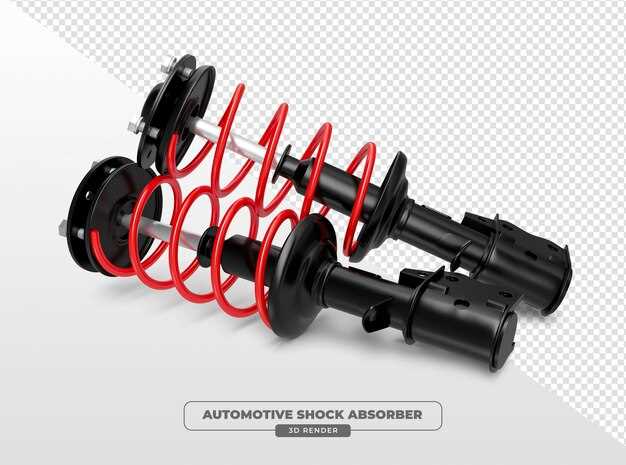
The suspension system plays a crucial role in determining the overall performance and ride quality of a vehicle. Front and rear suspension adjustments are essential for optimizing handling, comfort, and safety. Different types of suspension setups, such as coilovers or air suspension, offer various levels of adjustability, giving drivers the ability to tailor their ride to specific driving conditions and personal preferences.
Properly adjusting the suspension can significantly enhance traction and stability, particularly when cornering or driving on rough terrain. Front suspension adjustments typically involve settings like alignment, camber, and toe angles, which affect how the vehicle responds to steering inputs. In contrast, rear suspension adjustments focus on shock absorber settings, ride height, and spring preload, all of which influence the vehicle’s weight distribution and overall dynamics.
Understanding the underlying principles of these adjustments can empower drivers to make informed decisions when it comes to fine-tuning their vehicles. As we delve into the specifics of front and rear suspension adjustments, we will explore key concepts, adjustment techniques, and the impact these changes have on a vehicle’s performance and safety.
How to Set Up Front Suspension for Optimal Handling

Setting up the front suspension properly is crucial for achieving optimal handling in any vehicle. A well-tuned front suspension improves steering response, enhances cornering stability, and increases overall ride comfort. Here are key steps to effectively set up your front suspension.
1. Assess Your Weight Distribution
Understanding the weight distribution of your vehicle is the first step in suspension setup. Heavier vehicles may require stiffer springs, while lighter vehicles benefit from softer springs. Check manufacturer specifications or use corner weight scales to determine your vehicle’s weight at each corner. Adjust the front suspension based on this data to ensure balanced handling.
2. Choose the Right Springs
Choosing the correct springs is essential for handling performance. Select springs with an appropriate spring rate that corresponds to your driving style and vehicle weight. For aggressive cornering, opt for stiffer springs; for daily driving, a softer setup can provide comfort. Consult with suspension specialists if uncertain about the proper spring rates.
3. Adjust the Ride Height
Ride height influences how the vehicle handles. Lowering the front suspension can lower the center of gravity, thus improving handling. However, ensure that the ride height remains within the manufacturer’s recommendations to avoid bottoming out or affecting suspension travel. Adjust ride height using adjustable coilovers or spring spacers for precision.
4. Fine-Tune Damper Settings
Damper settings affect how quickly the suspension reacts to bumps and road conditions. Start with the manufacturer’s recommended settings, then adjust compressions and rebound damping based on your driving experience. A stiffer setting may improve responsiveness, while a softer setting can enhance comfort. Test different settings to find the right balance.
5. Alignment Settings
Ensure proper alignment of the front suspension. Incorrect camber, caster, and toe angles can drastically affect handling. Consult your vehicle’s specifications for optimal angles and use an alignment shop to make precise adjustments. Proper toe settings can significantly enhance your vehicle’s responsiveness during steering inputs.
6. Regular Maintenance
Keep your front suspension components in good condition through regular maintenance. Inspect for wear on bushings, ball joints, and other components. Replace any damaged parts to maintain accuracy in handling and ensure safety. Periodic checks and adjustments are critical, especially if you frequently drive on uneven surfaces.
By following these steps and making precise adjustments, you can optimize your front suspension for improved handling performance. Remember that each vehicle is unique, and adjustments may vary based on driving conditions and personal preference.
Fine-Tuning Rear Suspension for Improved Stability
Fine-tuning rear suspension is essential for enhancing vehicle stability, particularly during cornering, acceleration, and uneven terrain navigation. Adjustments to the rear suspension can significantly impact how the vehicle handles and responds to driver inputs.
One critical factor in rear suspension adjustment is the spring rate. The spring rate determines how much weight the rear springs can support and influences ride height. A stiffer spring rate can improve stability by reducing body roll during cornering but may lead to a harsher ride. Conversely, a softer spring rate can enhance comfort but may cause instability at higher speeds or during sharp turns. Finding the ideal balance is crucial for achieving optimal handling.
Shock absorber settings also play a vital role in rear suspension tuning. Adjusting the compression and rebound settings of the shocks can significantly alter the vehicle’s response to road conditions. Increased compression damping can help manage the weight transfer during acceleration and braking, while appropriate rebound damping can control how quickly the suspension returns to its original position after compression. Both settings should be fine-tuned to ensure the rear suspension provides predictable handling while maintaining comfort.
Another important aspect is ride height. Lowering the rear of the vehicle can enhance aerodynamics and reduce the center of gravity, improving cornering stability. However, excessive lowering can lead to bottoming out over bumps. Adjusting the ride height to the recommended specifications while considering the vehicle’s use case will optimize performance.
Finally, the alignment of the rear suspension components should not be overlooked. Proper camber, toe, and caster settings can enhance stability and tire wear. Regularly checking and adjusting these alignment parameters will ensure that all components work harmoniously for peak performance.
In summary, fine-tuning rear suspension involves careful consideration of spring rates, shock absorber settings, ride height, and alignment. Each aspect contributes to the overall stability of the vehicle, and small adjustments can lead to significant improvements in handling and performance.
Common Mistakes in Suspension Adjustments and How to Avoid Them

One prevalent mistake in suspension adjustments is neglecting to consider rider weight. Failing to set the sag according to the rider’s weight can lead to poor handling and reduced control. To avoid this, accurately measure the sag by having the rider sit on the bike in a standing position, and adjust the preload until the sag falls within the recommended range for their weight.
Another common error is making simultaneous adjustments to multiple settings without understanding their interdependencies. This can result in confusing handling characteristics and make further tuning difficult. Instead, focus on one adjustment at a time and assess its impact before proceeding to the next. This systematic approach allows for better understanding and refinement of the suspension setup.
Ignoring environmental conditions is also a frequent oversight. Suspension settings that work well in one scenario may not perform similarly in another. For instance, adjustments suitable for a smooth trail may not suffice for a rocky path. Always consider the terrain and weather conditions before fine-tuning the suspension. Document any changes made to help track performance variations across different environments.
Inadequate testing is another mistake; adjustments should not be based solely on theoretical knowledge or static measurements. Riders need to take the bike out for a test ride after each adjustment to truly gauge its effectiveness. Ideally, test in the specific riding conditions expected to be encountered regularly to ensure that adjustments meet practical performance needs.
Lastly, overlooking the importance of routine maintenance can compromise suspension performance. Dirt, debris, and wear can affect the functionality of suspension components. Regular checks and cleaning of forks and shocks, along with timely lubrication, will help maintain optimal performance and extend the life of the suspension system. Plan routine inspections as part of your maintenance schedule to avoid performance degradation over time.

